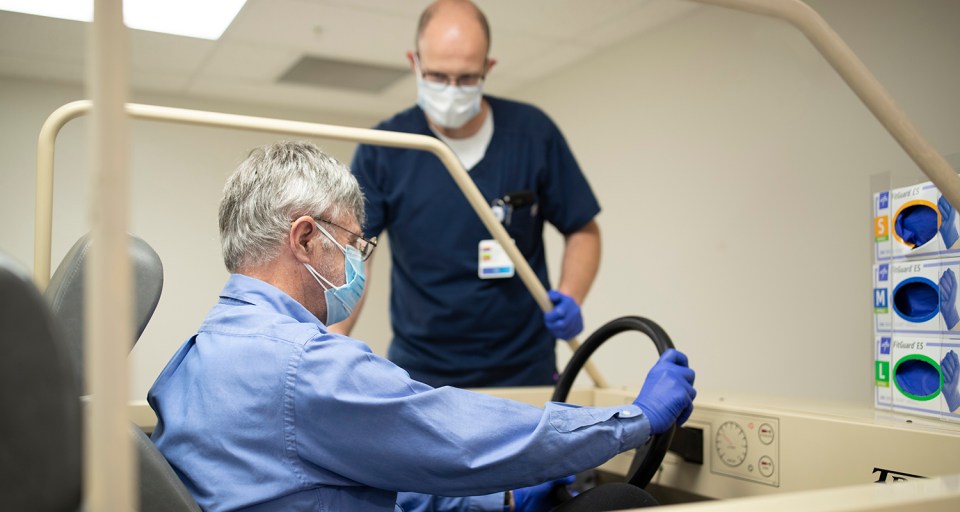Believe it or not, 2020 started out fairly routine for our Company. As we have for the past several years, we headed to San Francisco to present at the annual J.P. Morgan Healthcare Conference. There I reiterated that increases in the aging population continue to create demand for the services we provide.
While the world has certainly changed since I presented at the January conference, our commitment to providing high-quality care in a cost-effective manner remains the same.
The pandemic has solidified the fact that after a sudden onset of a stroke, injury from an accident or after an extended illness, people need our level of care to regain their independence and return home doing the things they love.
As a result of COVID-19, we have enhanced our infection control measures and implemented new masking and visitation policies, but our commitment to connected care and superior outcomes hasn’t changed.
Treating recovering COVID-19 patients
While they don’t make up a large percentage of our overall patients, many of our hospitals and home health services have treated people recovering from COVID-19.
These patients, many on ventilators, have had extended stays at an acute care hospital. They are extremely weak and require intense rehabilitation to regain both their strength and cognitive abilities. These patients came to our hospitals for intense nursing and therapy care, so they can get back their lives. I think that speaks volumes about our quality outcomes and sets us apart from other post-acute settings.
The challenges some facilities in the post-acute space have had with COVID-19 has been highlighted in the media. In contrast, our rehabilitation hospitals and home health agencies have been able to help recovering COVID patients return to their independence and pre-COVID lives, and in most cases, they are able to do so in less than two weeks.
The need for our services remains
Our level of therapy and care is also needed for those recovering from stroke and other debilitating conditions and injuries. Pandemic or not, we know these will still occur. That’s why our hospitals’ doors never closed, and our home health and hospice locations continued to care for patients.
What I’ve said in the past still rings true today—as the population ages, the demand for the high-quality care we provide will increase.
Meeting that need
Throughout this pandemic, we’ve continued to expand our national footprint. We added two new states with the recent openings of our hospitals in Iowa and South Dakota, and our development teams continue to look for opportunities to identify markets where our services and high-quality care are needed most.
Clinical collaboration is a big part of our strategy, and we will continue our focus on expanding our number of overlap markets where we have both a rehabilitation hospital and a home health location within an approximate 30-mile radius. Our patients are experiencing smoother transitions from hospital to home when our hospital and home health teams work together.
In summary, our business fundamentals aren’t changing. There is a demand for the level of care we provide in the hospital and the home, and we are here for those patients who need us now and in the future.
Mark Tarr is president and CEO of Encompass Health
The content of this site is for informational purposes only and should not be taken as professional medical advice. Always seek the advice of your physician or other qualified healthcare provider with any questions you may have regarding any medical conditions or treatments.



